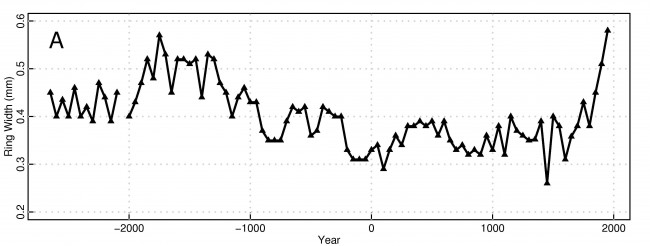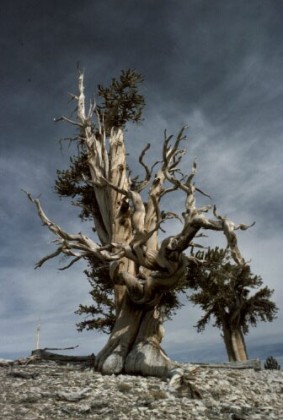19 November 2009
Yet Another Independent Confirmation of Warming
Posted by Dan Satterfield
In Science, one piece of data, even if it’s conclusive is never the whole story. A consensus is not likely unless there are multiple independent sets of data that all point to the same thing.
The age of the Earth is a good example. There are dozens of independent methods of estimating the age of our small spinning fragment of solar driftwood. (I stole that line from Orson Welles by the way). They all point to somewhere near 4,500 million years.
That’s why your basic science text book in every school says the Earth is 4.5 billion years old. It’s not just one or two scientists who came up with the number via some brilliant method!
The same is true with the warming of Earth over the last 150 years. It’s not just all those thermometers the naysayers keep trying (and failing abysmally) to prove are wrong. It’s not just the sea surface temperature that agrees. It’s not just the Borehole data that also agrees.
It’s all of it and more. Add it together and you get a scientific consensus.
This week, you can add a new set of data. It’s about yet another of those independent pieces of evidence that says the planet is warming. Yet another reason why every major science organisation has endorsed the IPCC reports
Ray Pierrehumbert a Climate Scientist at the University of Chicago has written a great piece on Real Climate.
RC, by the way, is a blog written by a group of Climate Scientists including Gavin Schmidt of NASA. They got tired of the incredibly poor reporting and junk science that is fed to the public. I always learn something new when I read their posts.
So what did Dr. Pierrehumbert write about?
Read on!
Matthew Salazer of the University of Arizona looked at a certain type of very old trees. Bristlecone pines near the tree line in the Great Basin area of America. Trees near the tree line grow very slowly and this allows a much better estimate of temperature than trees that live an easier life in warmer climes. You can read the details of why this is so (it gets a bit complex) at Real Climate.
So what did they find?
Look at the change in the width of the tree rings. (Warmer years mean thicker rings):

From Salzer et al in Proceedings of The National Academy of Sciences. Click the image to read the paper it's open access from NAS.
You are looking at a proxy for temperature in the Great basin back 4,000 years.
So what does the paper conclude? Here are their own words:
“These findings suggest an important role
for temperature in controlling bristlecone pine ring widths at
these upper-treeline sites on decadal-to-multicentury time
scales. They also point to a prominent role for temperature as a
cause of the rapid acceleration of ring growth in these trees in
the 20th century”
The evidence piles up in a week of unusual silliness by the usual suspects.
The top piece of silliness was this story:.
Just this past week came the news that the same old group of skeptics petitioned the American Physical Society to water down their organisations position statement on climate change. The petition was from less than 1/2 of 1 % of the members. Only 4 or 5 signers had published peer reviewed climate research.
It was overwhelmingly rejected. They are looking at strengthening the statement instead.
Richard Littlemore at Deltoid does the best investigative reporting on climate science news anywhere. He has the gritty details. Why do I expect conservative think tanks to be involved. It always seems to be dominated by retired men who are not in the climate physics field. Same pattern, time after time.
Another bright spot of excellent climate science reporting continues to be Peter Sinclair’s Climate Denial Crock of the Week-




 Dan Satterfield has worked as an on air meteorologist for 32 years in Oklahoma, Florida and Alabama. Forecasting weather is Dan's job, but all of Earth Science is his passion. This journal is where Dan writes about things he has too little time for on air. Dan blogs about peer-reviewed Earth science for Junior High level audiences and up.
Dan Satterfield has worked as an on air meteorologist for 32 years in Oklahoma, Florida and Alabama. Forecasting weather is Dan's job, but all of Earth Science is his passion. This journal is where Dan writes about things he has too little time for on air. Dan blogs about peer-reviewed Earth science for Junior High level audiences and up.